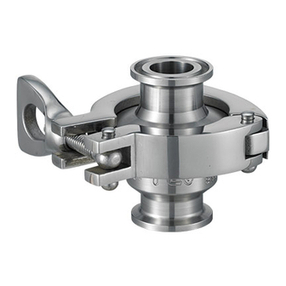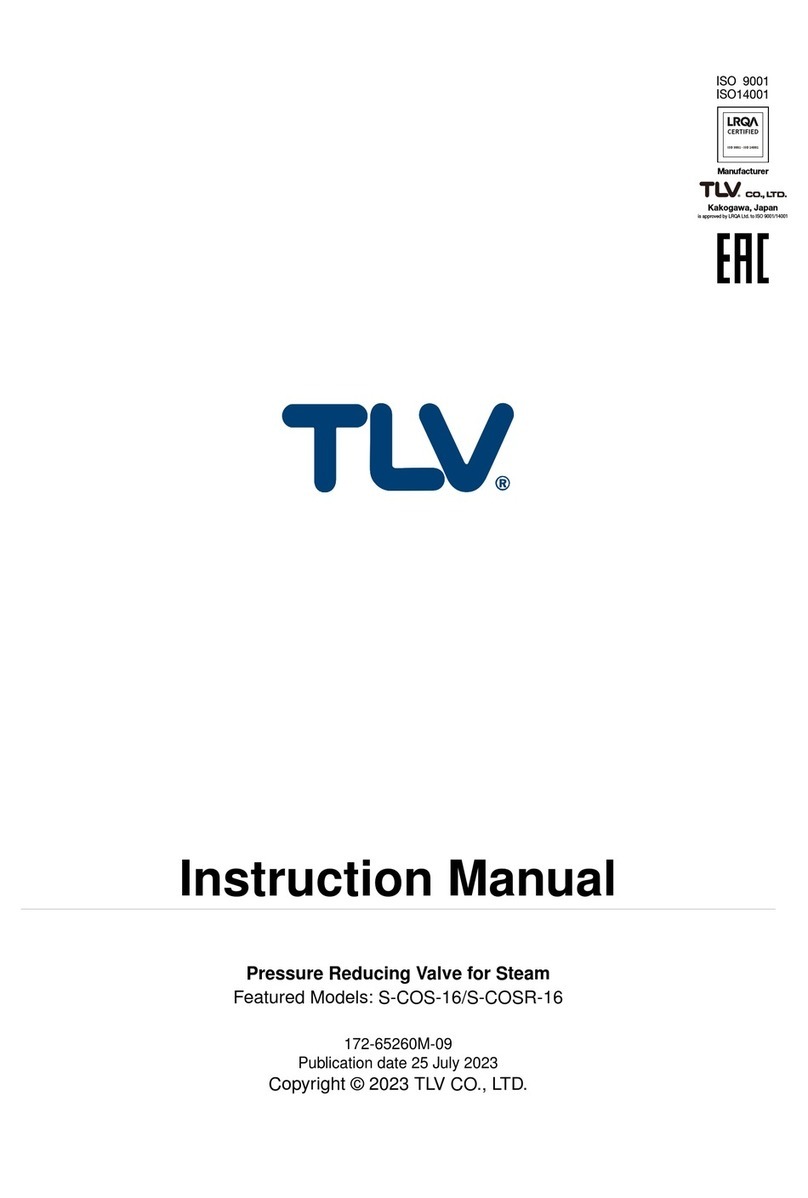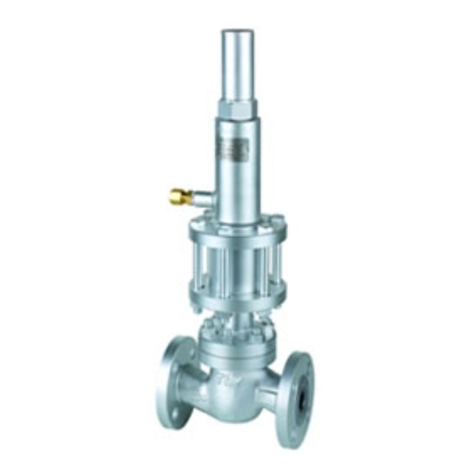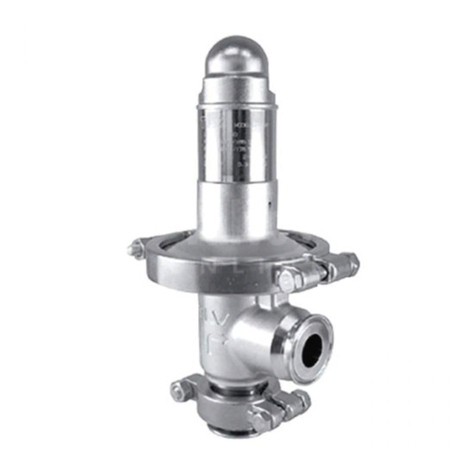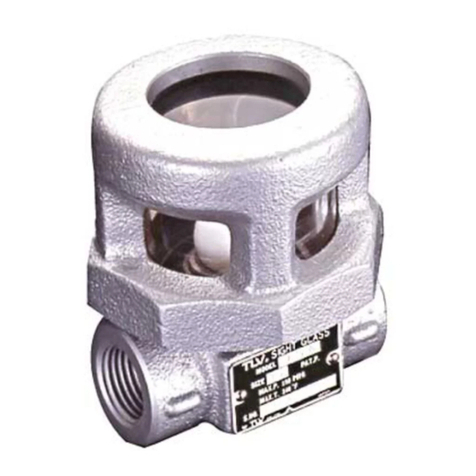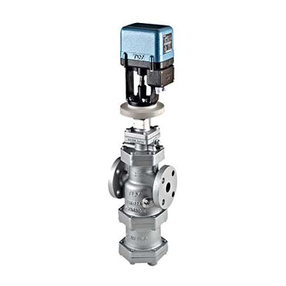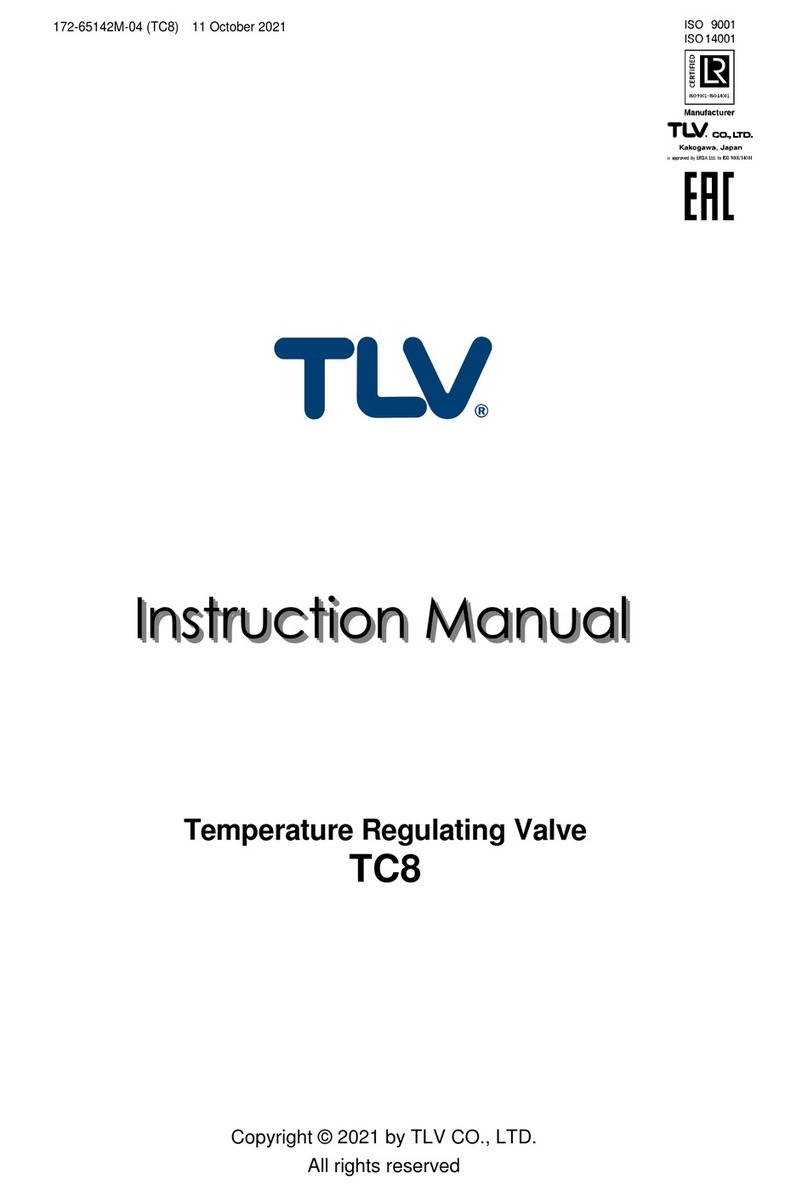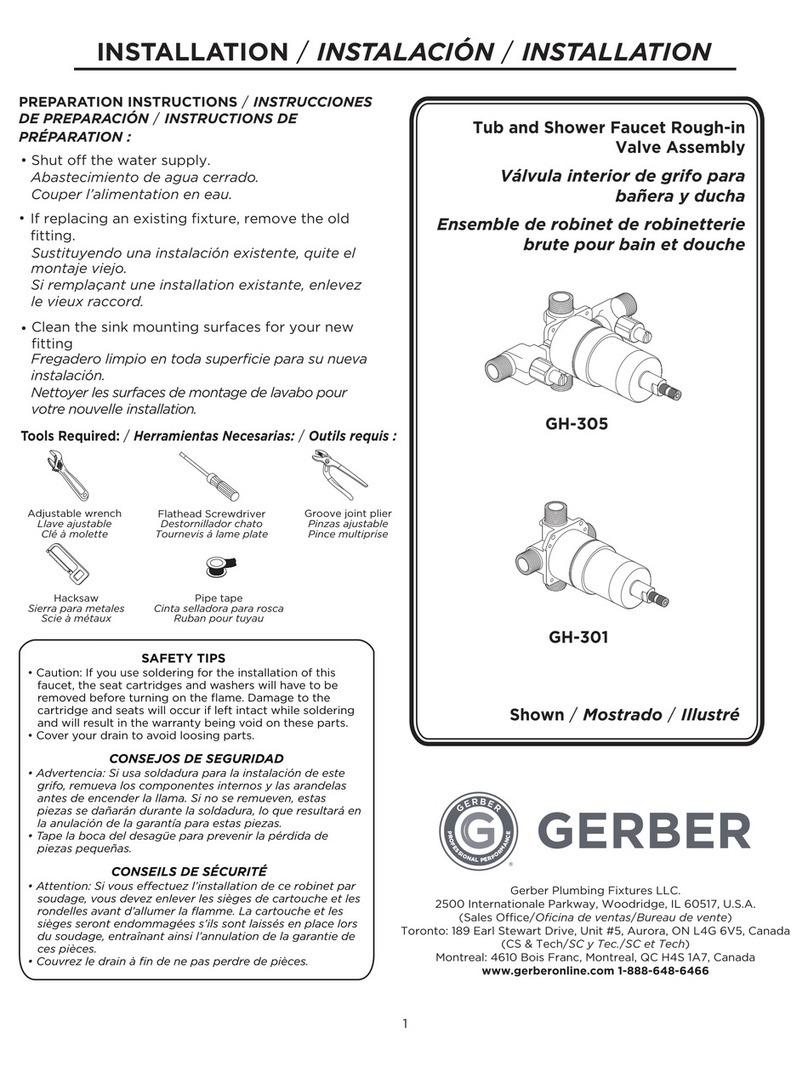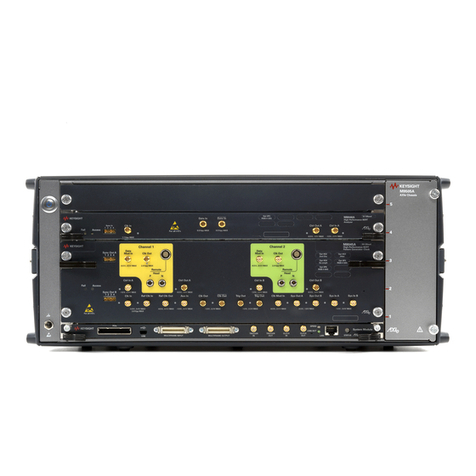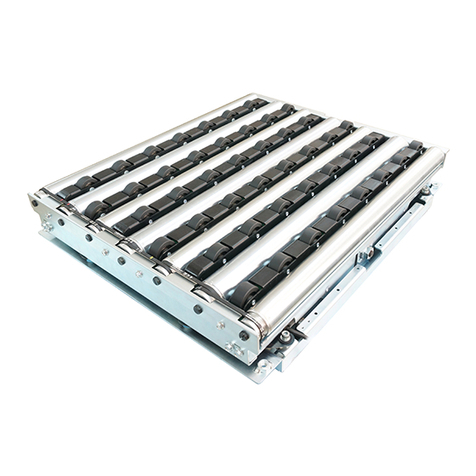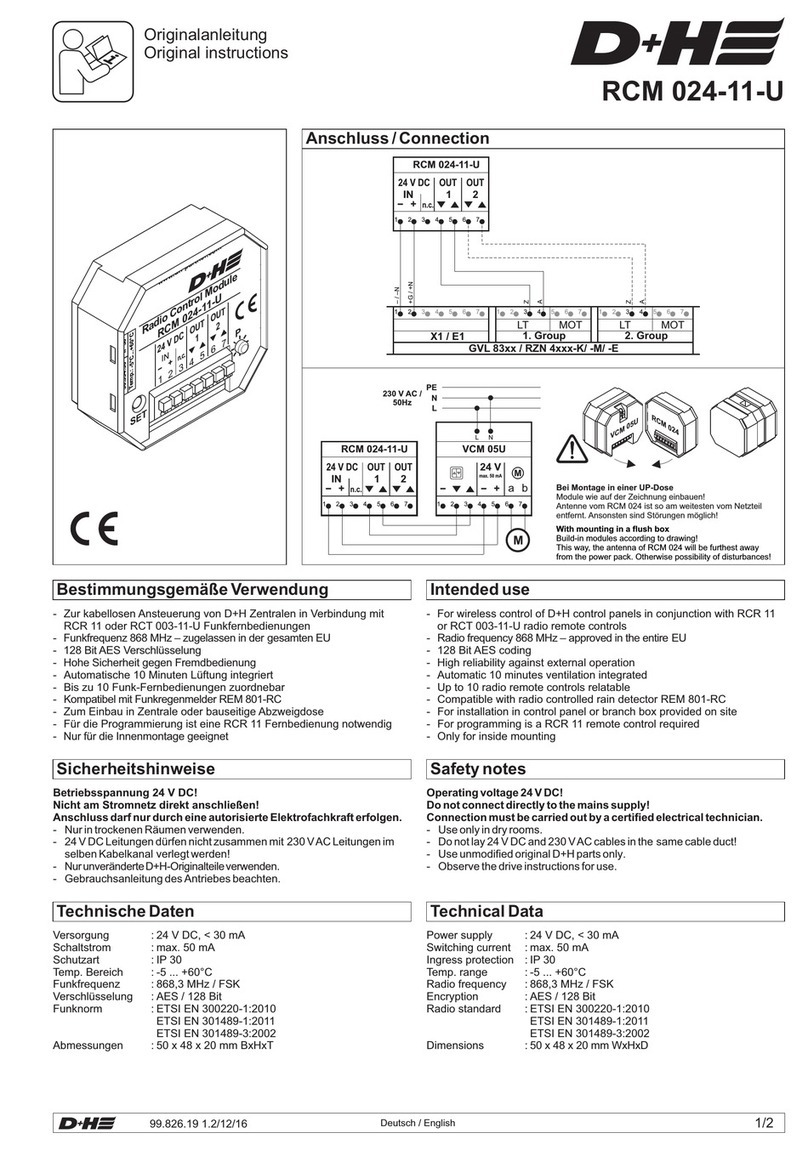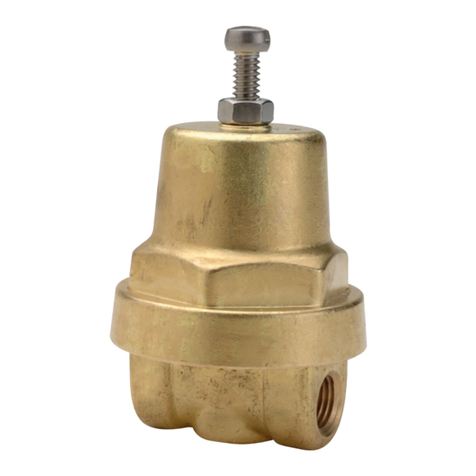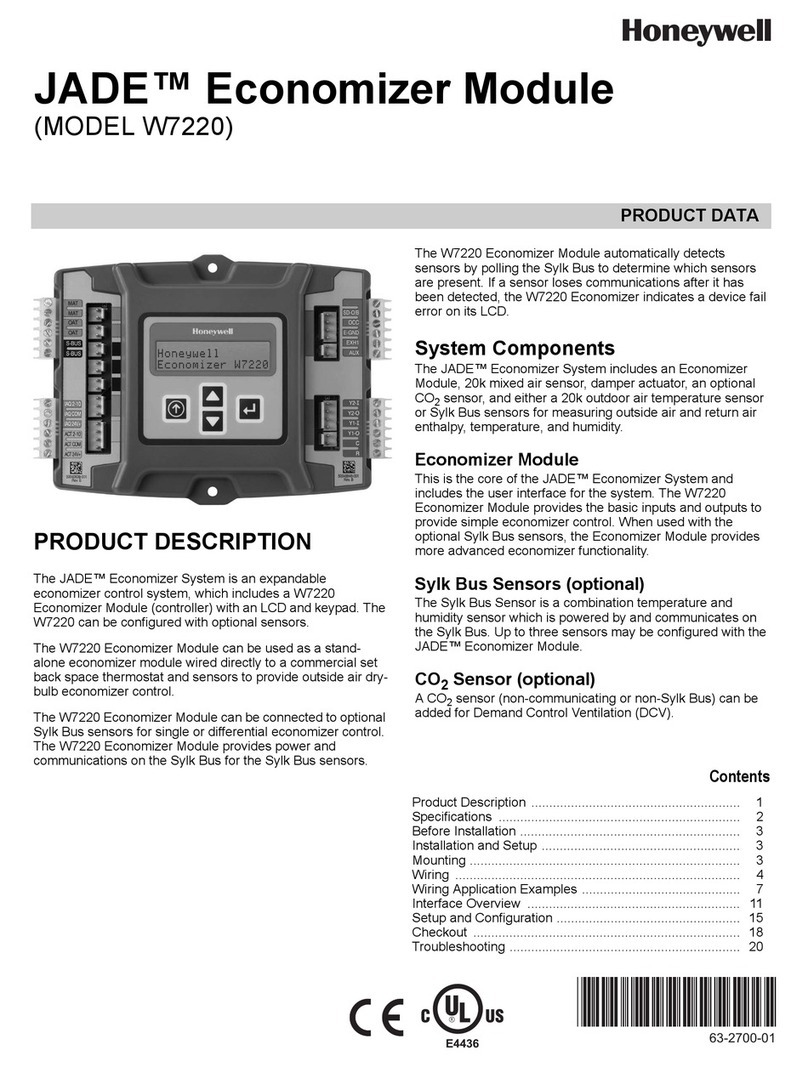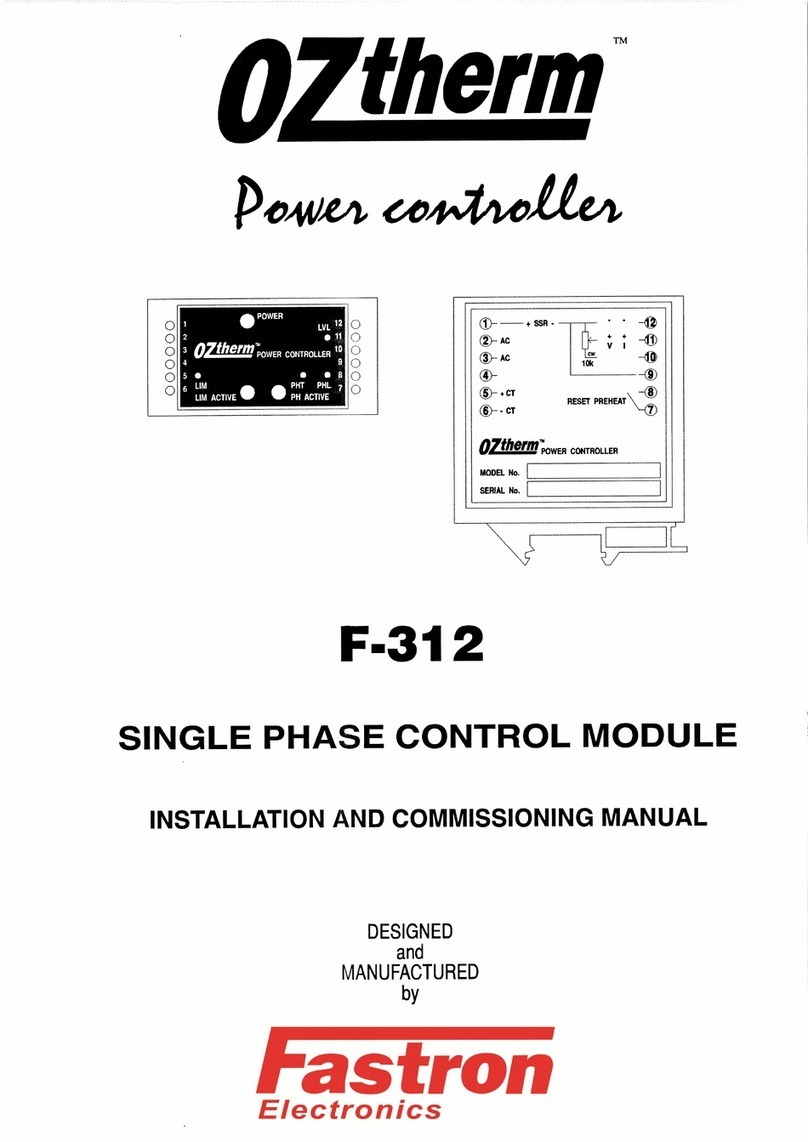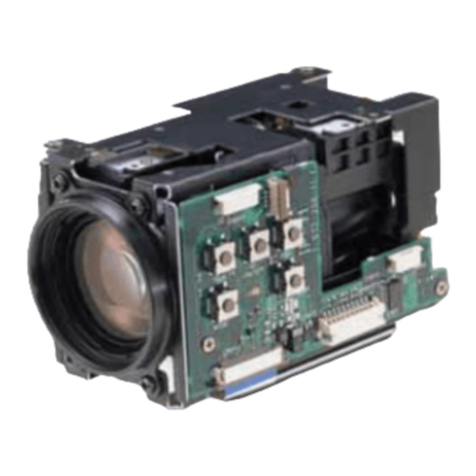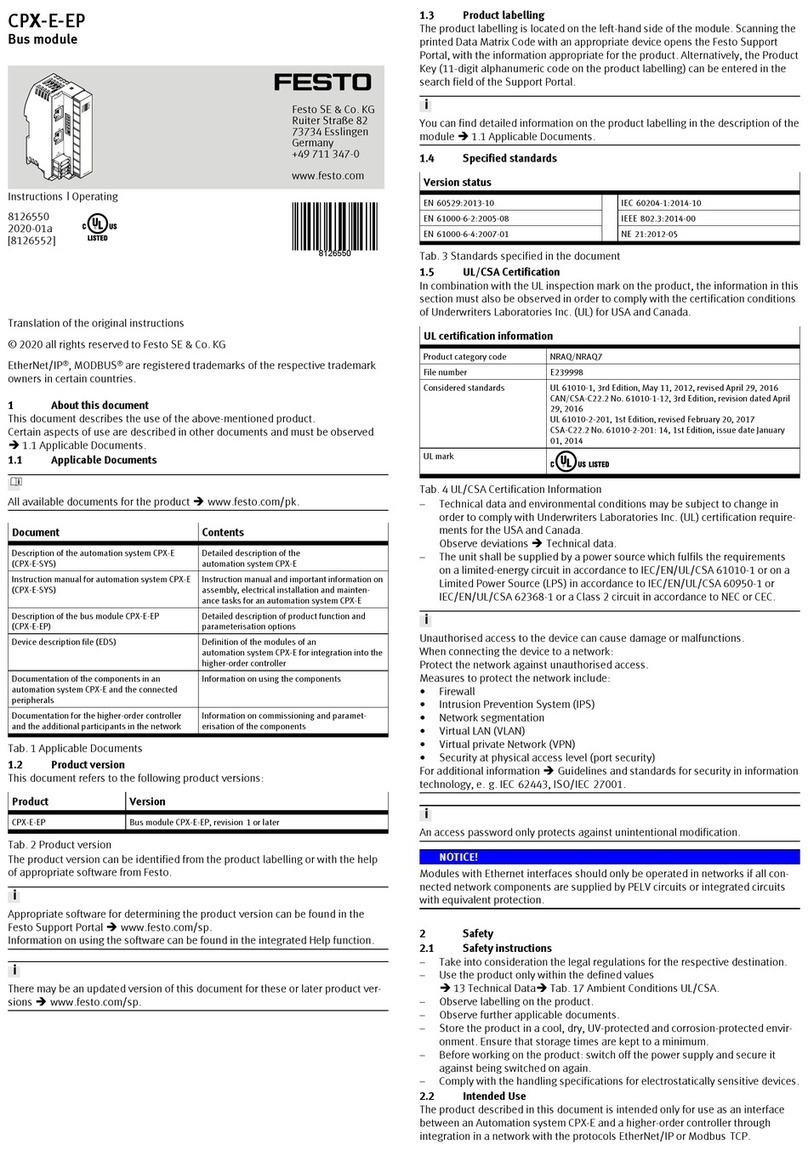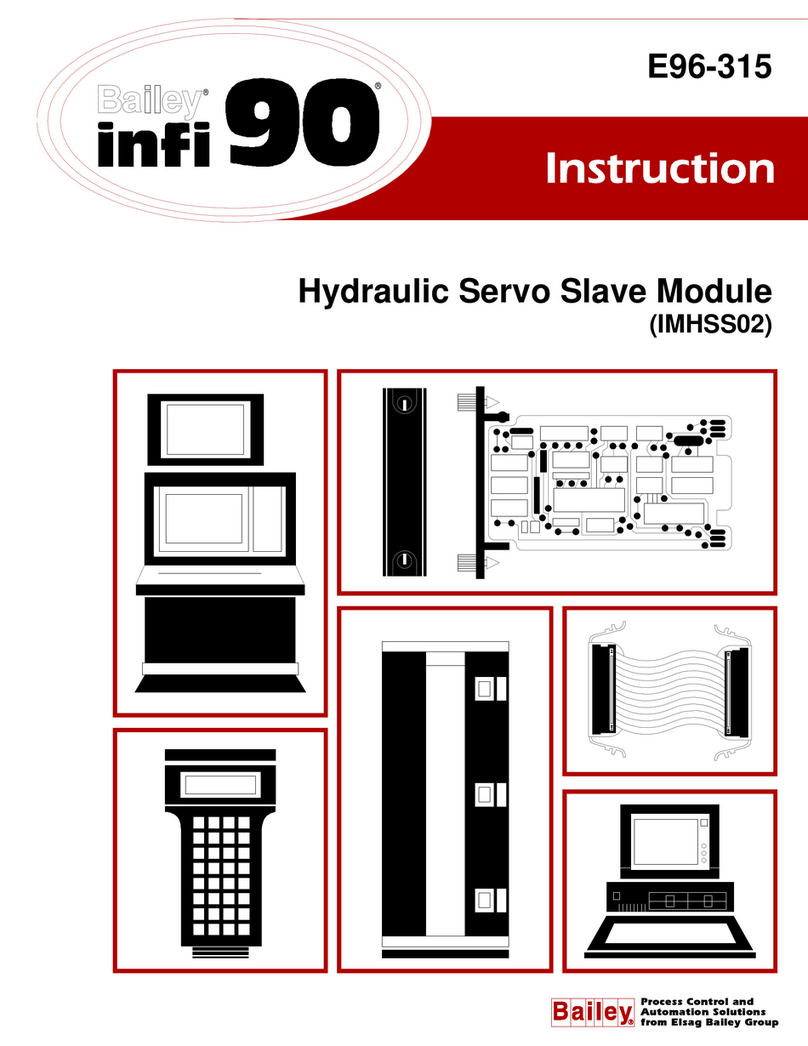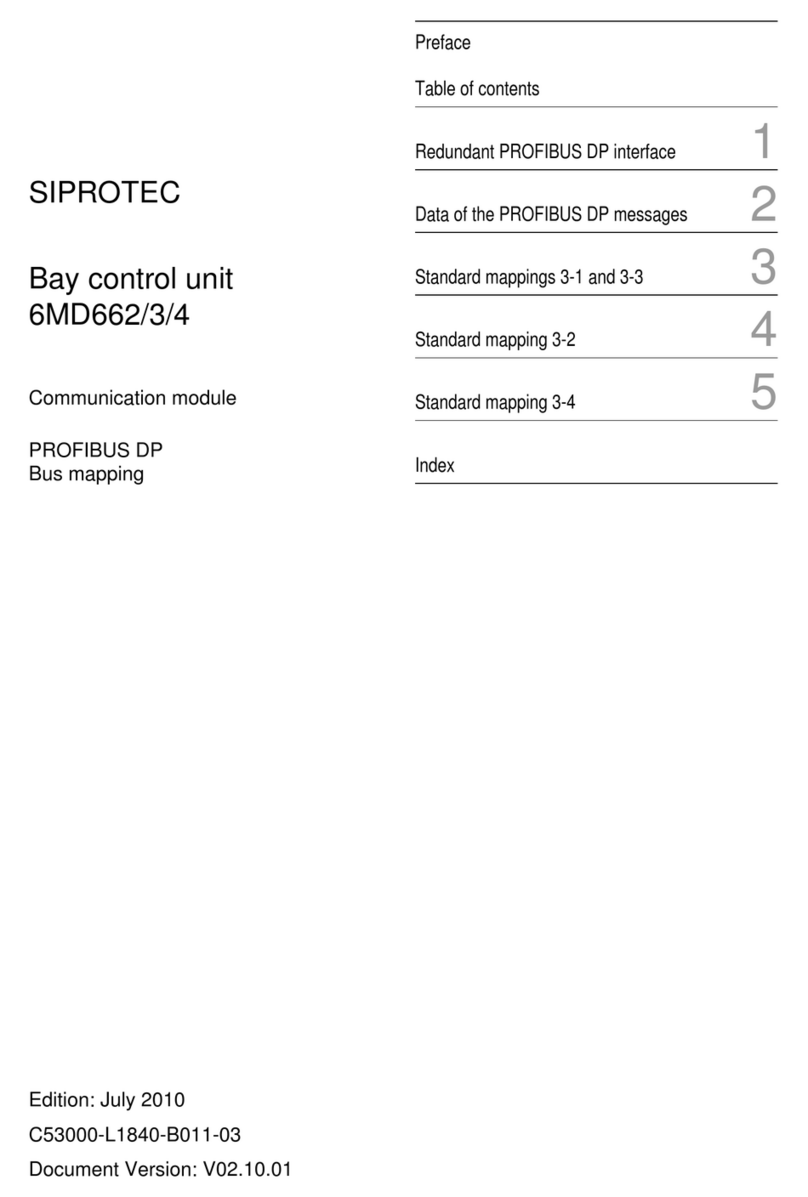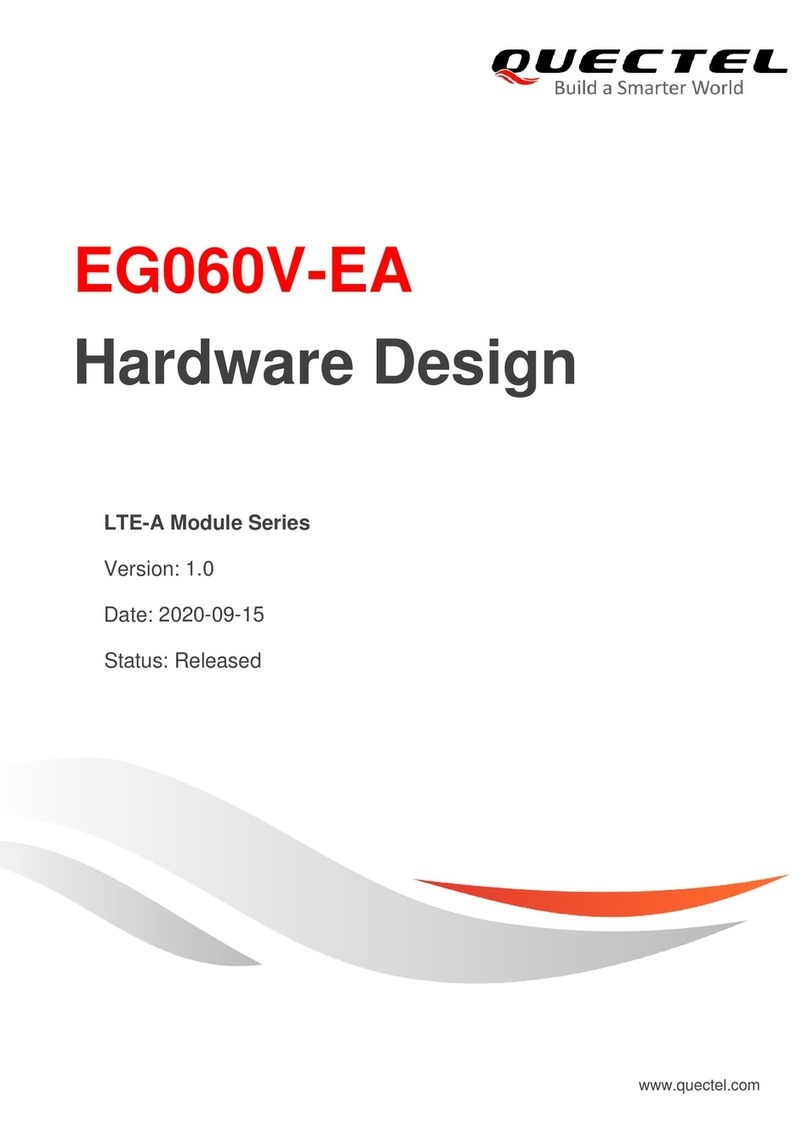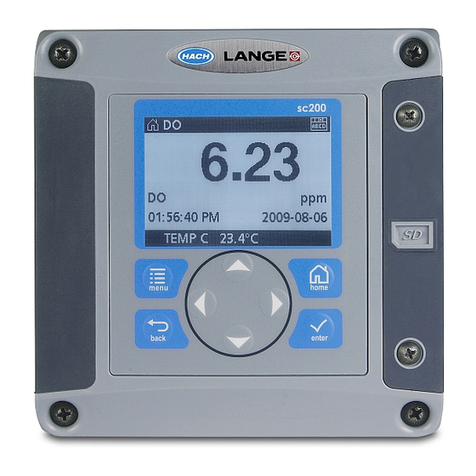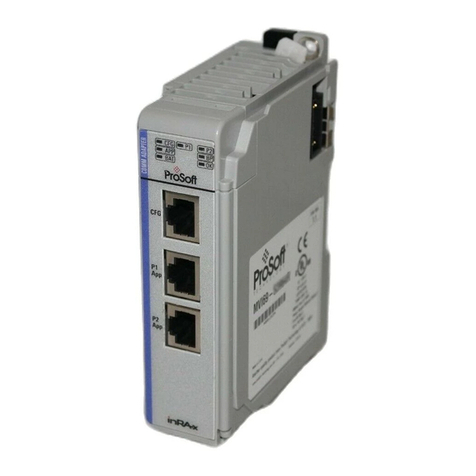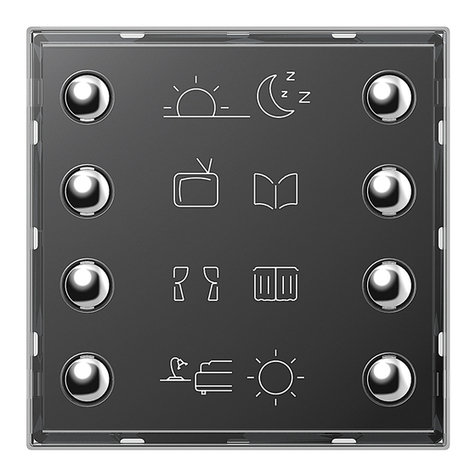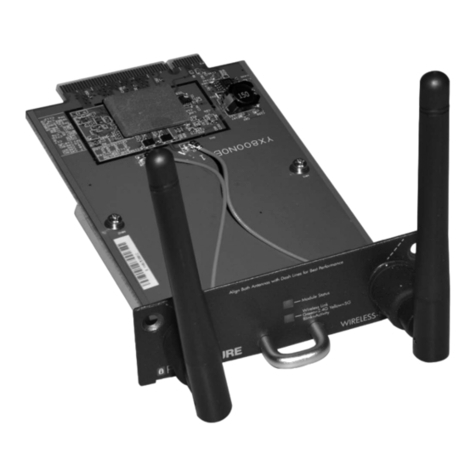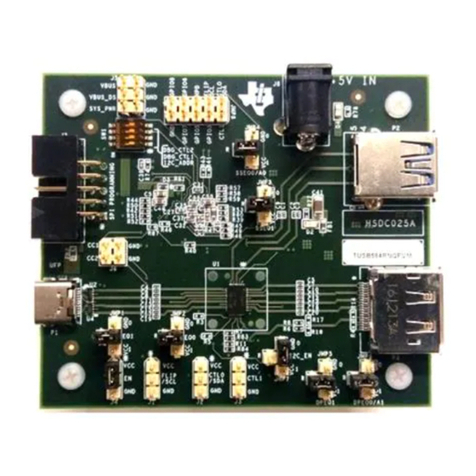TLV CK3M User manual

172-65120MA-13 (CK-Series) 24 August 2020
Disc Type Check Valve
CK3M / CK3T / CK3R / CK3T−M
CKF3M / CKF3R
CK3MG
CKF3MG / CKF3RG
Copyright © 2020 by TLV CO., LTD.
All rights reserved

172-65120MA-13 (CK-Series) 24 Aug 2020
1
Contents
Introduction.........................................................................1
Safety Considerations.........................................................2
Specifications......................................................................3
Configuration.......................................................................5
Installation...........................................................................7
Maintenance .......................................................................8
Disassembly / Reassembly.................................................9
Troubleshooting................................................................10
Product Warranty..............................................................11
Introduction
Thank you for purchasing the TLV disc type check valve.
This product has been thoroughly inspected before being shipped from the
factory. When the check valve is delivered, before doing anything else,
check the specifications and external appearance to make sure nothing is
out of the ordinary. Also be sure to read this manual carefully before use and
follow the instructions to be sure of using the product properly.
Due to its compact design, the disc type check valve can easily be installed
in places where space is limited, and can be installed in either horizontal or
vertical pipelines. It can be used even with an extremely low pressure
differential.
If detailed instructions for special order specifications or options not
contained in this manual are required, please contact TLV for full details.
This instruction manual is intended for use with the models listed on the front
cover. It is necessary not only for installation but for subsequent
maintenance, disassembly/reassembly and troubleshooting. Please keep it
in a safe place for future reference.

172-65120MA-13 (CK-Series) 24 Aug 2020
2
Safety Considerations
Read this section carefully before use and be sure to follow the instructions.
Installation, inspection, maintenance, repairs, disassembly, adjustment and valve
opening/closing should be carried out only by trained maintenance personnel.
The precautions listed in this manual are designed to ensure safety and prevent
equipment damage and personal injury. For situations that may occur as a
result of erroneous handling, three different types of cautionary items are used
to indicate the degree of urgency and the scale of potential damage and
danger: DANGER, WARNING and CAUTION.
The three types of cautionary items above are very important for safety: be sure
to observe all of them as they relate to installation, use, maintenance, and
repair. Furthermore, TLV accepts no responsibility for any accidents or damage
occurring as a result of failure to observe these precautions.
Symbols
Indicates a DANGER, WARNING or CAUTION item.
DANGER
Indicates an urgent situation which poses a threat of death or
serious injury
WARNING
Indicates that there is a potential threat of death or serious injury
CAUTION
Indicates that there is a possibility of injury or equipment / product
damage
WARNING
DO NOT use for toxic, flammable or otherwise hazardous fluids.
Use only for fluids listed in the specification table. This product is
for intended use only. Improper use may result in such hazards as
damage to the product or malfunctions that may lead to serious
accidents.
CAUTION
Install properly and DO NOT use this product outside the
recommended operating pressure, temperature and other
specification ranges.
Improper use may result in such hazards as damage to the
product or malfunctions that may lead to serious accidents. Local
regulations may restrict the use of this product to below the
conditions quoted.
When disassembling or removing the product, wait until the
internal pressure equals atmospheric pressure and the
surface of the product has cooled to room temperature.
Disassembling or removing the product when it is hot or under
pressure may lead to discharge of fluids, causing burns, other
injuries or damage.
Be sure to use only the recommended components when
repairing the product, and NEVER attempt to modify the
product in any way.
Failure to observe these precautions may result in damage to the
product and burns or other injury due to malfunction or the
discharge of fluids.
CAUTION
Do not use excessive force when connecting threaded pipes
to the product.
Over-tightening may cause breakage leading to fluid discharge,
which may cause burns or other injury.
Use only under conditions in which no freeze-up will occur.
Freezing may damage the product, leading to fluid discharge,
which may cause burns or other injury.

172-65120MA-13 (CK-Series) 24 Aug 2020
3
Specifications
WARNING
DO NOT use for toxic, flammable or otherwise hazardous fluids. Use only
for fluids listed in the specification table. This product is for intended use
only. Improper use may result in such hazards as damage to the
product or malfunctions that may lead to serious accidents.
WARNING
Install properly and DO NOT use this product outside the recommended
operating pressure, temperature and other specification ranges.
Improper use may result in such hazards as damage to the product or
malfunctions which may lead to serious accidents. Local regulations
may restrict the use of this product to below the conditions quoted.
CAUTION
Use only under conditions in which no freeze-up will occur. Freezing
may damage the product, leading to fluid discharge, which may cause
burns or other injury.
CAUTION
Model
Size
mm
(in)
Body
Material
Sealing
Material
∆P*1
MPa
(psi)
Applicable
Fluids
PMO*1
MPaG
(psig)
TMO*1
°C
(°F)
PMA*2
MPaG
(psig)
TMA*2
°C
(°F)
Screwed
CK3M
15 –25
(1/2–1)
Brass
Metal*3
0.002
(0.3)
Steam
1.0
(150)
220
(428)
1.0
(150)
220
(428)
32 –50
(11/4–2)
Bronze
15 –50
(1/2–2)
Stainless
Steel
2.1
(300)
2.1
(300)
CK3T
15 –25
(1/2–1)
Brass
PTFE*3
Steam, Water
1.0
(150)
185
(365)
1.0
(150)
32 –50
(11/4–2)
Bronze
15 –50
(1/2–2)
Stainless
Steel
1.6
(230)
2.1
(300)
CK3R
15 –25
(1/2–1)
Brass
NBR *4
Air, Water
1.0
(150)
90
(194)
1.0
(150)
32 –50
(11/4–2)
Bronze
15 –50
(1/2–2)
Stainless
Steel
1.6
(230)
2.1
(300)
CK3T-M
15
(1/2)
Brass
PTFE*3
0.007
(1)
Steam, Water
1.0
(150)
185
(365)
1.0
(150)
20,25
(3/4, 1)
0.005
(0.75)
CK3MG
25,40,50,80
(1,11/2,2,3)
Stainless
Steel
Metal*3
0.001
(0.15)
Steam, Water
2.1
(300)
220
(428)
3.2
(450)
Flangeless (Wafer)
CKF3M
15 –40
(1/2–11/2)
Stainless
Steel
Metal*3
0.002
(0.3)
Steam, Water
3.0
(425)
350
(662)
3.0
(425)
350
(662)
CKF3R
15 –40
(1/2–11/2)
Stainless
Steel
FPM *4
Air, Water
1.6
(230)
150
(302)
CKF3MG
50 –100
(2 –4)
Stainless
Steel
Metal*3
0.001
(0.15)
Steam, Water
3.0
(425)
350
(662)
CKF3RG
50
(2)
Stainless
Steel
FPM *4
Air, Water
1.6
(230)
150
(302)
(1 MPa = 10.197 kg/cm2)
*1∆P = Minimum Opening Differential Pressure; PMO = Maximum Operating Pressure; TMO =
Maximum Operating Temperature
NOTE: - PMO,TMO may vary according to the options selected. Check nameplate, drawing, etc.
- When the valve has remained closed for a long period of time, the valve and the valve seat
may stick, increasing the necessary minimum opening differential pressure. Make sure to
open the valve properly before the installation.
In addition, the minimum opening differential pressure varies depending on the direction of
flow due to the influence of the weight of the valve disc. See the table on the next page.
*2 Maximum Allowable Pressure (PMA) and Maximum Allowable Temperature (TMA) are PRESSURE
SHELL DESIGN CONDITIONS, NOT OPERATING CONDITIONS
*3PTFE = Fluorine Resin
Perfect sealing cannot be guaranteed for metal or PTFE sealing surfaces.
*4NBR = Nitrile Rubber; FPM = Fluorine Rubber
For rubber sealing surfaces, a closing differential pressure of more than 0.05 MPa (7 psi) will be
required for perfect sealing. (However, degradation of, or debris on, the rubber sealing surface may
prevent perfect sealing.)

172-65120MA-13 (CK-Series) 24 Aug 2020
4
Minimum Opening Differential Pressure by Direction of Fluid Flow
Flow Direction
Model
Horizontal
Vertical: Upward
Vertical: Downward
MPa
[kPa]
(psi)
MPa
[kPa]
(psi)
MPa
[kPa]
(psi)
CK3M/CK3T/CK3R
0.002
[2]
(0.3)
0.0015
[1.5]
(0.22)
0.0025
[2.5]
(0.40)
CK3T-M
Size
mm(in)
15 (1/2)
0.007
[7]
(1)
0.0065
[6.5]
(0.94)
0.0075
[7.5]
(1.10)
20, 25 (3/4,1)
0.005
[5]
(0.75)
0.0045
[4.5]
(0.65)
0.0055
[5.5]
(0.80)
CK3MG
0.001
[1]
(0.15)
0.0005
[0.5]
(0.07)
0.0015
[1.5]
(0.22)
CKF3M/CKF3R
0.002
[2]
(0.3)
0.0016
[1.6]
(0.23)
0.0024
[2.4]
(0.35)
CKF3MG/CKF3RG
0.001
[1]
(0.15)
0.0005
[0.5]
(0.07)
0.0015
[1.5]
(0.22)
Cv Values
Size
Model
mm
15
20
25
32
40
50
65
80
100
(in)
(1/2)
(3/4)
(1)
(11/4)
(11/2)
(2)
(21/2)
(3)
(4)
CK3M/
CK3T/
CK3R
Cv (US)
3.7
6.6
10
15
21
29
—
Cv (UK)
3.1
5.5
8.3
13
17
24
Kvs (DIN)
3.2
5.7
8.6
13
18
25
CK3T-M
Cv (US)
3.7
6.6
10
—
Cv (UK)
3.1
5.5
8.3
Kvs (DIN)
3.2
5.7
8.6
CK3MG
Cv (US)
—
25
—
55
91
—
180
—
Cv (UK)
21
46
76
150
Kvs (DIN)
21
47
78
154
CKF3M/
CKF3R
Cv (US)
4.6
8.8
16
20
29
—
Cv (UK)
3.8
7.3
13
17
24
Kvs (DIN)
3.9
7.5
14
17
25
CKF3MG
Cv (US)
—
54
100
140
240
Cv (UK)
45
83
117
200
Kvs (DIN)
46
85
120
206
CKF3RG
Cv (US)
—
54
—
Cv (UK)
45
Kvs (DIN)
46
Connectable Flange Standards
(This applies to the flangeless connections; CKF3M, CKF3R, CKF3MG and CKF3RG)
Size
JIS
ASME / JPI
PN (EN/DIN)
BS TABLE
mm
(in)
15
(1/2)
5,10,16,20,30K
Class 150,300
PN 6,10,16,25,40
A,D,E,F,H,J
20
(3/4)
25
(1)
Class
125,150,250,300
32
(11/4)
40
(11/2)
50
(2)
65
(21/2)
F,H,J
80
(3)
10,16,20,30K
A,D,E,F,H,J
100
(4)
PN 10,16,25,40
Options
Model
∆P Minimum Opening Differential Pressure
CK3M/CK3T/CK3R
MPa
0.001, 0.01, 0.02
(psi)
(0.15, 1.5, 3)
CKF3M/CKF3R
MPa
0.001, 0.01*
(psi)
(0.15, 1.5*)
*Except nominal size of 40 mm (11/2 in) for ∆P 0.01 MPa (1.5 psi).
Model
Rubber Sealing Material
CK3R
Fluorine Rubber (FPM) —TMO 150 °C (302 °F)
Special use
As a vacuum breaker*
*CK3R, CKF3R and CKF3RG (with rubber sealing) should not be used.
Due to the nature of the rubber, there is a possibility of the disc sticking to the metal valve seat,
compromising product performance at the very low differential pressures under which vacuum
breakers operate.

172-65120MA-13 (CK-Series) 24 Aug 2020
5
Configuration
CK3M/CK3T/CK3R/CK3T-M
No.
Name
M*
R*
1
Body
2
Inlet Union
3
Valve Disc
4
Spring Holder
5
Coil Spring
6
Union Gasket
*Replacement parts are available
onlyin the following kits:
M = Maintenance Kit
R = Repair Kit
NOTE: - When requesting a Repair Kit, please specify the minimum opening differential
pressure.
- For nominal sizes 15 –25 mm (1/2–1 in), confirm that an identification code of "A"
or later is present on the nameplate as shown in the figure below when requesting
replacement parts. Both Maintenance Kit and Repair Kit will be available for
products with such a code. If no such code is shown on the nameplate, please
contact TLV.
- For nominal sizes 32 –50 mm (11/4–2 in), both Maintenance Kit and Repair Kit are
available regardless of identification code.
Location of identification code on nameplate
Identification Code
PTFE* Valve Seat
* PTFE = Fluorine Resin
The CK3T, CK3T-M inlet union has a
PTFE valve seat insert.
Rubber Sealing
CK3R valve disc is inlaid with rubber.
CK3MG
No.
Name
M*
R*
1
Body
2
Inlet Union
3
Valve Disc
4
Coil Spring
5
Union Gasket
6
Nameplate
*Replacement parts are available
only in the following kits:
M = Maintenance Kit
R = Repair Kit
NOTE: When requesting a Repair Kit, please specify the minimum opening differential
pressure.

172-65120MA-13 (CK-Series) 24 Aug 2020
6
CKF3M/CKF3R
Body Fin
Rubber Sealing
TheCKF3R valvedisc is inlaidwithrubber.
CKF3MG/CKF3RG
Body Fin
Rubber Sealing
The CKF3RG valve disc is inlaid with
rubber.
No.
Name
1
Body
2
Valve Disc
3
Coil Spring
4
Spring Holder
5
Nameplate (CKF3M(R)G only)
Replacement parts are not available for CKF3 series (flangeless) check valves, as
special equipment is required for assembly/disassembly.
Sealing material and flange face finish can be identified by a stamp on the body fin.
The flange face finish is stamped for DIN serration only, with the "D" mark.
Mark
Model
Sealing Material
Mark
Flange Face Finish
M
CKF3M
Metal
―
- Surface roughness:
3.2 –6.3 µmRa (125 –250
AARH) Serration
- ASME B16.5 Serration
CKF3MG
F
CKF3R
CKF3RG
Fluorine Rubber (FPM)
(Standard)
N
Nitrile Rubber (NBR)*
D
DIN Serration
E
Ethylene Propylene
Rubber (EPDM)*
*Optional or special order materials

172-65120MA-13 (CK-Series) 24 Aug 2020
7
Flange
Fin
Bolt
Installation
WARNING
DO NOT use for toxic, flammable or otherwise hazardous fluids. Use only
for fluids listed in the specification table. This product is for intended use
only. Improper use may result in such hazards as damage to the
product or malfunctions that may lead to serious accidents.
WARNING
Install properly and DO NOT use this product outside the recommended
operating pressure, temperature and other specification ranges.
Improper use may result in such hazards as damage to the product or
malfunctions which may lead to serious accidents. Local regulations
may restrict the use of this product to below the conditions quoted.
CAUTION
Do not use excessive force when connecting threaded pipes to the
product. Over-tightening may cause breakage leading to fluid
discharge, which may cause burns or other injury.
CAUTION
Installation, inspection, maintenance, repairs, disassembly, adjustment and valve
opening/closing should be carried out only by trained maintenance personnel.
1. Avoid installation directly after equipment that may cause sudden changes in
pressure or flow including water hammer and pulsation. (For example: high flow
ON-OFF valves or pumps that start and stop frequently) Strong shocks to
internal parts may result in damage to the spring or premature wear on the disc
valve and seating surfaces.
2. Temperature:
Maximum Operating
Temperature
Model
350 °C (662 °F)
CKF3M
CKF3MG
220 °C (428 °F)
CK3M
CK3MG
185 °C (365 °F)
CK3T
CK3T-M
150 °C (302 °F)
CKF3R
CKF3RG
90 °C (194 °F)
CK3R
NOTE: 1. Choose the model that meets operating temperature requirements
2. The CK3R optional FPM sealing model can be used to 150 °C (302 °F)
3. Before installation, be sure to remove all protective seals.
4. Before installing the product, blow out the inlet piping to remove any piping
scraps, dirt and oil. Close the inlet valve after
blowdown.
5. Before installing the product, open the valve to
make sure that the valve and the valve seat do not
stick to each other.
6. Install the product so the arrow on the body is
pointing in the direction of flow.
7. There are no restrictions on the direction of installation, however vertical piping
installation is recommended. To center the valve, install the CKF3M(R) and the
CKF3M(R)G with the bolts touching the fins (see the figure shown above).
8. When installing a screwed type, secure the inlet and outlet piping of the product
using supports, etc. to ensure that it does not place stress on the inlet union or
the body of the product.
9. Open the inlet valve, and perform the necessary checks to make sure that the
product functions properly.
If there is a problem, determine the cause using the “Troubleshooting” section in
this manual.

172-65120MA-13 (CK-Series) 24 Aug 2020
8
Maintenance
Be sure to use only the recommended components when repairing the
product, and NEVER attempt to modify the product in any way. Failure to
observe these precautions may result in damage to the product or burns
or other injury due to malfunction or the discharge of fluids.
CAUTION
Operational Check
A visual inspection of the following items should be done on a daily basis to
determine whether the product is operating properly or has failed. Periodically (at
least biannually) the operation should also be checked using diagnostic equipment,
such as a stethoscope.
If the product should fail, it may cause damage to piping and equipment, resulting in
faulty or low quality products.
Normal
:
Where inlet pressure is higher than outlet pressure (equal to or greater
than the minimum opening differential pressure), flow, in the proper
direction, can be verified.
If outlet pressure becomes higher than inlet pressure, flow ceases.
Leakage
:
There is flow even when outlet pressure becomes higher than inlet
pressure.
Parts Inspection
When parts have been removed, or during periodic inspections, use the following
table to inspect the parts and replace any that are found to be defective.
Procedure
Gaskets:
Check for warping or damage
Valve Disc:
Check for scratches
Inlet Union Sealing Surfaces: Check for scratches
Coil Spring:
Check for scratches or wear
(After cleaning inside the body)
Spring Holder:
Check for scratches or wear

172-65120MA-13 (CK-Series) 24 Aug 2020
9
Disassembly/Reassembly
When disassembling or removing the product, wait until the internal
pressure equals atmospheric pressure and the surface of the product
has cooled to room temperature. Disassembling or removing the
product when it is hot or under pressure may lead to discharge of fluids,
causing burns, other injuries or damage.
CAUTION
Use the following procedures to remove components. Use the same procedures in
reverse to reassemble. (Installation, inspection, maintenance, repairs, disassembly,
adjustment and valve opening/closing should be carried out only by trained
maintenance personnel.)
Disassembly/Reassembly of Check Valve
CK3M/CK3T/CK3R/CK3T−M
Body
Coil Spring
Valve Disc
Union Gasket
Inlet Union
Spring Holder
CK3MG
Body
Coil Spring
Valve Disc
Union Gasket
Inlet Union
Part
During Disassembly
During Reassembly
Inlet Union
Remove with a wrench
Coat threads with anti-seize and tighten to the
proper torque
Union
Gasket
Remove the union gasket
Replace with a new gasket if warped or
damaged; make sure the gasket does not get
pinched when tightening the inlet union
Valve Disc
Remove the valve disc
Insert, making sure the polished surface is
facing the inlet union
Coil Spring
Remove the coil spring
CK3M/CK3T/CK3R/CK3T-M: Insert into
housing
CK3MG: Place the coil spring on the disc stem
Spring
Holder
(not CK3MG)
This part is inserted tightly in
the body, and is not meant to
be removed
—
CKF3M/CKF3R/CKF3MG/CKF3RG
Assembly/disassembly are not possible for these models as special equipment is
required. Accordingly, replacement parts are not available for these models.

172-65120MA-13 (CK-Series) 24 Aug 2020
10
Table of Tightening Torques
Inlet Union
Model
CK3M/CK3T/CK3R/CK3T-M
CK3MG
Size
Torque
DistanceAcrossFlats
Torque
DistanceAcrossFlats
mm
(in)
Nm
(lbf·ft)
mm
(in)
Nm
(lbf·ft)
mm
(in)
15
(1/2)
100
(73)
27
(11/16)
—
—
20
(3/4)
150
(110)
32
(11/4)
—
—
25
(1)
180
(130)
41
(15/8)
180
(130)
41
(15/8)
32
(11/4)
250
(185)
50
(131/32)
—
—
40
(11/2)
300
(220)
55
(25/32)
600
(440)
60
(23/8)
50
(2)
400
(290)
70
(23/4)
800
(590)
75
(215/16)
80
(3)
—
—
100
(315/16)
(1 Nm 10 kgcm)
NOTE: If drawings or other special documentation were supplied for the product, any torque given
there takes precedence over values shown here.
Troubleshooting
When disassembling or removing the product, wait until the internal
pressure equals atmospheric pressure and the surface of the product
has cooled to room temperature. Disassembling or removing the
product when it is hot or under pressure may lead to discharge of fluids,
causing burns, other injuries or damage.
CAUTION
When the product fails to operate properly, use the following table to locate the
cause and remedy.
Problem
Cause
Remedy
Screwed
Flangeless
The sound of flow
can be heard when
the outlet pressure is
higher than inlet
pressure
Dirt or damage on sealing surfaces or
build-up inside the body
Clean parts
The valve disc is catching due to wear,
dirt, rust, etc.
Replace with a new check valve
The coil spring is dislodged or broken
Replace with a
new coil spring
Replace with a
new check valve
The spring holder is dislodged or
broken
Replace with a new check valve
Leakage to the
outside of the check
valve
The union gasket is warped or
damaged
Replace with a
new gasket
—
Incorrect inlet union tightening torque
Tighten to the
proper torque
—
The check valve is subject to stress
from the piping (weight, torsion, etc.)
Correct the piping
—
Flow is poor
The valve disc is catching due to wear,
dirt, rust, etc.
Clean parts
Incorrect operating pressure
Adjust by increasing the pressure or
replace with a check valve that has a
larger Cv value
The valve does not
open at the specified
differential pressure
Sticking of the valve and the valve seat
due to rust, pipe sealing agent, etc.
Clean parts
If the valve disc is inlaid with rubber, it
may be the case that the rubber is
sticking to the metal. Contact TLV for
details.
NOTE: When replacing parts with new, use the parts list for reference and replace with parts from the
Maintenance Kit, Repair Kit, etc. (Please note that replacement parts are only available in pre-
packaged kits.)

172-65120MA-13 (CK-Series) 24 Aug 2020
11
Product Warranty
1. Warranty Period
One year following product delivery.
2. Warranty Coverage
TLV CO., LTD. warrants this product to the original purchaser to be free
from defective materials and workmanship. Under this warranty, the
product will be repaired or replaced at our option, without charge for parts
or labor.
3. This product warranty will not apply to cosmetic defects, nor to any
product whose exterior has been damaged or defaced; nor does it apply
in the following cases:
1) Malfunctions due to improper installation, use, handling, etc., by other
than TLV CO., LTD. authorized service representatives.
2) Malfunctions due to dirt, scale, rust, etc.
3) Malfunctions due to improper disassembly and reassembly, or
inadequate inspection and maintenance by other than TLV CO., LTD.
authorized service representatives.
4) Malfunctions due to disasters or forces of nature.
5) Accidents or malfunctions due to any other cause beyond the control
of TLV CO., LTD.
4. Under no circumstances will TLV CO., LTD. be liable for consequential
economic loss damage or consequential damage to property.
* * * * * * *
For Service or Technical Assistance:
Contact your TLV representative or your regional TLV office.
Manufacturer
881 Nagasuna, Noguchi
Kakogawa, Hyogo 675-8511, JAPAN
Tel: 81-(0)79-427-1800
This manual suits for next models
8
Table of contents
Other TLV Control Unit manuals
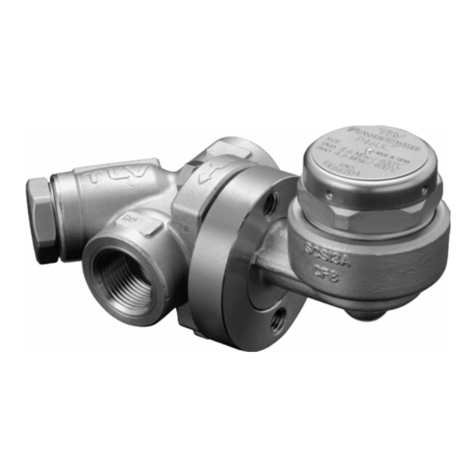
TLV
TLV PowerDyne QuickTrap P46UC User manual
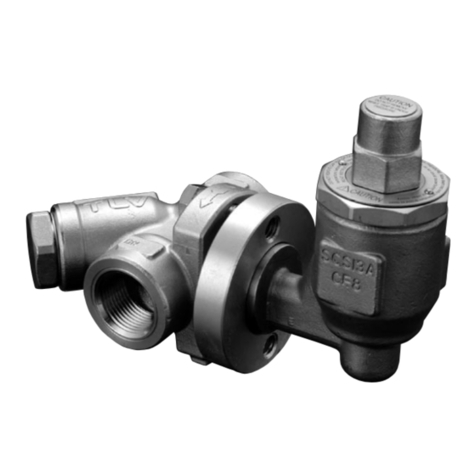
TLV
TLV QuickTrap FX1 User manual

TLV
TLV CV-COS-20 User manual

TLV
TLV COSPECT PN-COS-16 User manual
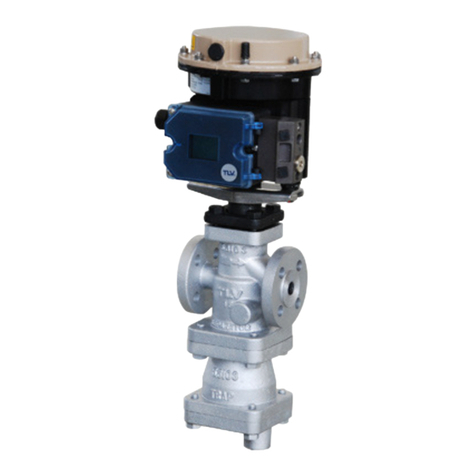
TLV
TLV CV-COS-16 User manual
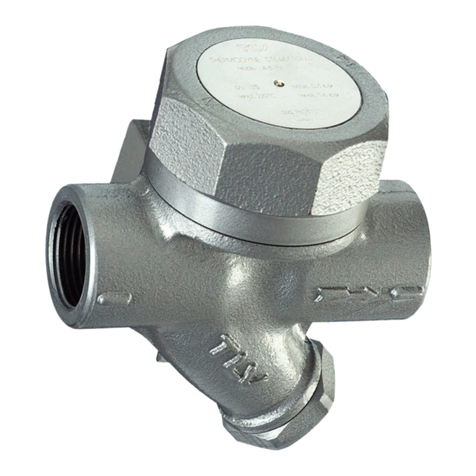
TLV
TLV ThermoDyne A3N User manual
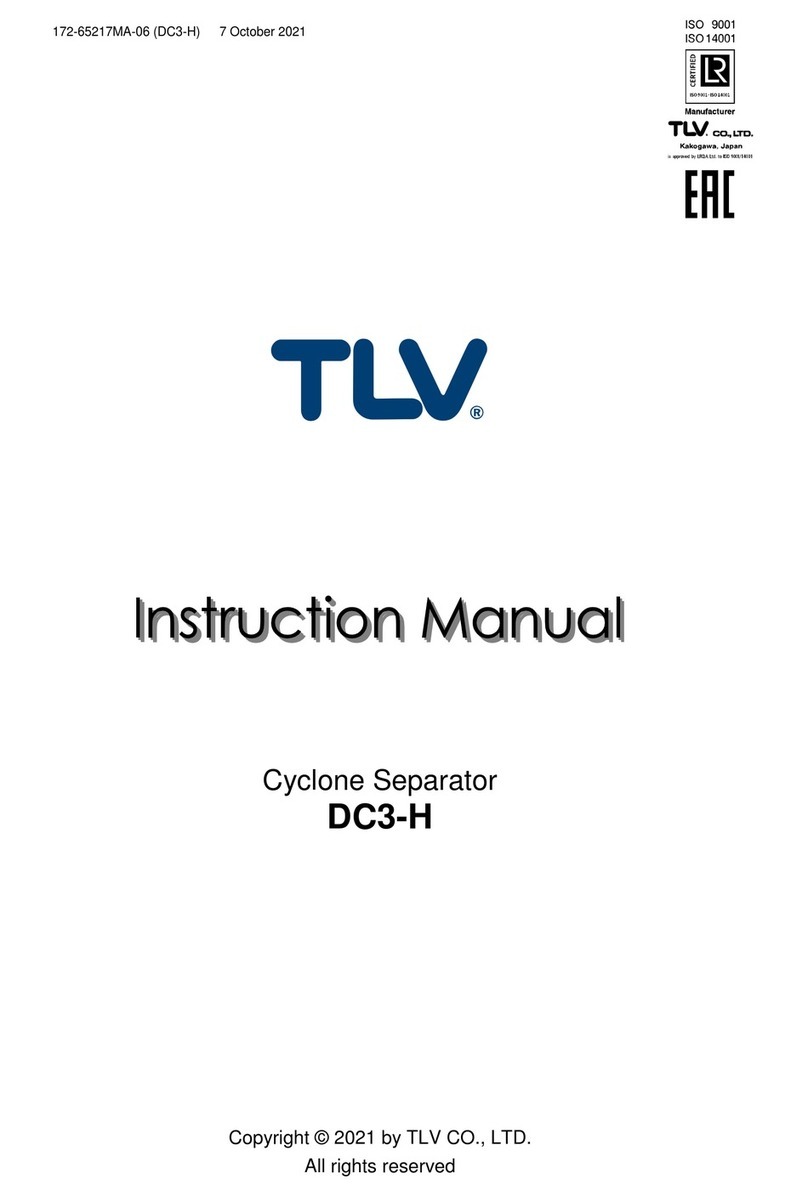
TLV
TLV DC3-H User manual
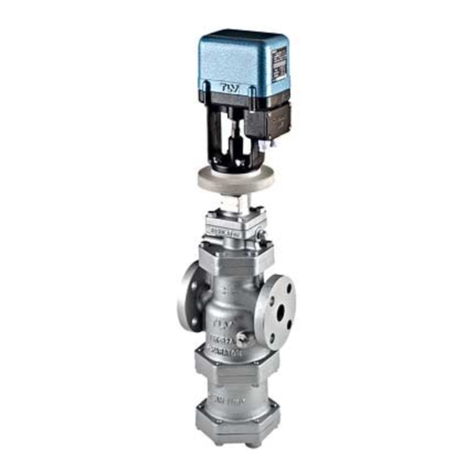
TLV
TLV COSPECT M-COS-3 User manual
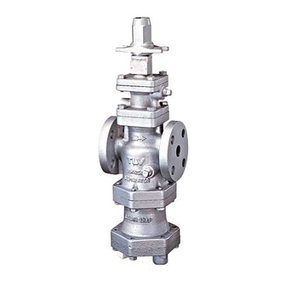
TLV
TLV COS Series User manual
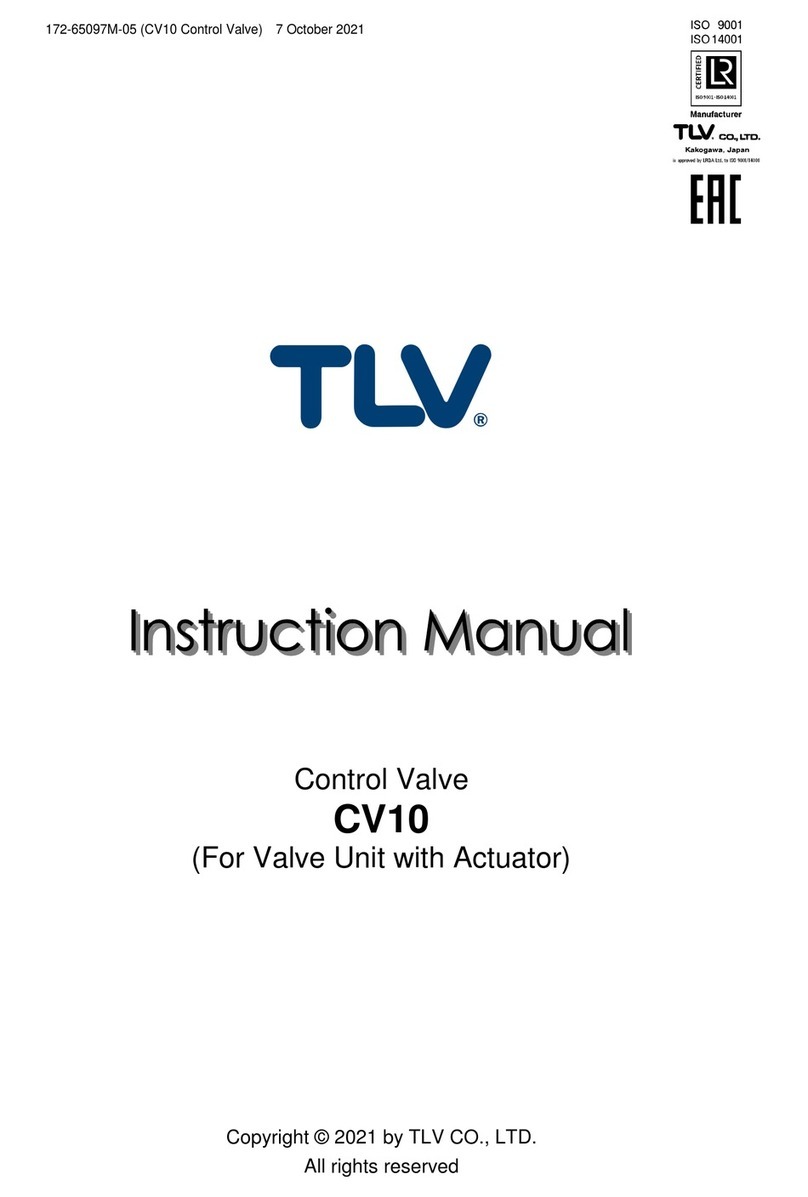
TLV
TLV CV10 User manual
